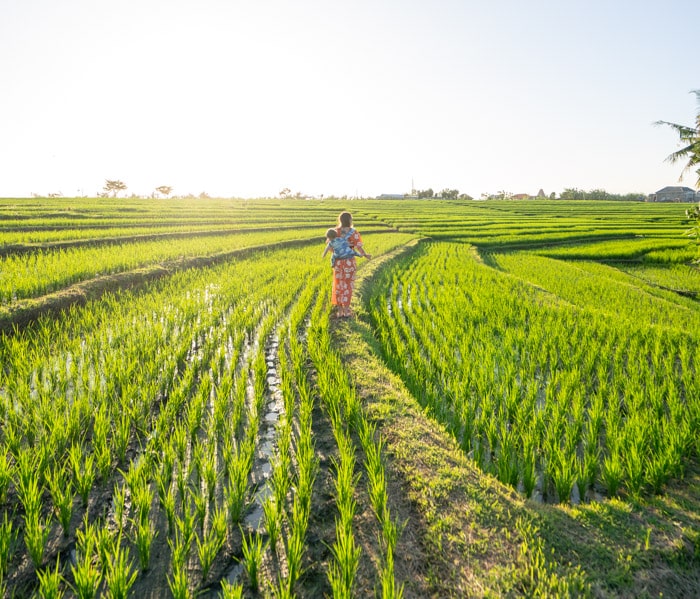Our family began traveling internationally with a baby long before starting this blog – our son first joined us in Spain at 14 months old and our daughter in Germany and Netherlands before 3 month! Since it’s been a minute, I asked long-time travel expert and first-time mom Kristin Addis to share some of her best tips now that she’s globetrotting with her own baby.
Check out Kristin’s best tips for international travel with a baby and drop a comment below with your suggestions!
Top Tips for Traveling Internationally With a Baby
1. Consider Getting Baby Global Entry
You probably already know that your baby needs a passport, but did you know that they also can get their own Global Entry (or NEXUS for Canadians)? TSA PreCheck allows kids to “stay with you up”piggyback” off of their parents’ until 12 years old, but Global Entry is required from birth for each person.
Global Entry also includes TSA PreCheck, which is a must-have for domestic travel in the US. It allows you to go through faster lines without taking off your shoes or removing electronics and liquids from your carry-on.
When you go through the Global Entry line, it scans your face as a method of verification for re-entry after international travel. The same is required of a baby, which is why they have to go through the same application process as anyone else. They’ll even need the in-person “interview”, which is really just the process of quickly taking their photo for the verification process.
Passports can take time to obtain. Once you have the passport, you can apply for Global Entry, which can also take months for approval and to get an appointment near you. Keep in mind that even if both parents have it, nobody can take advantage of the expedited line unless the baby has it, too.
If you plan to get Global Entry for the whole family, the good news is that many credit cards cover the fee! You can use those credits for anyone – just pay for the application on the card. Some great low-fee travel rewards credit cards that cover Global Entry include Capital One Venture Rewards, IHG One Premier Rewards and United Mileage Plus Explorer. There are lots of other best travel credit cards that include Global Entry as well!
For families who won’t do a ton of international travel, another option is to download the Mobile Passport Control app. It isn’t accepted at every port of entry all the time, but it’s a solid backup if you won’t be traveling internationally with a baby very often.
2. Add Baby to Your Plane Ticket
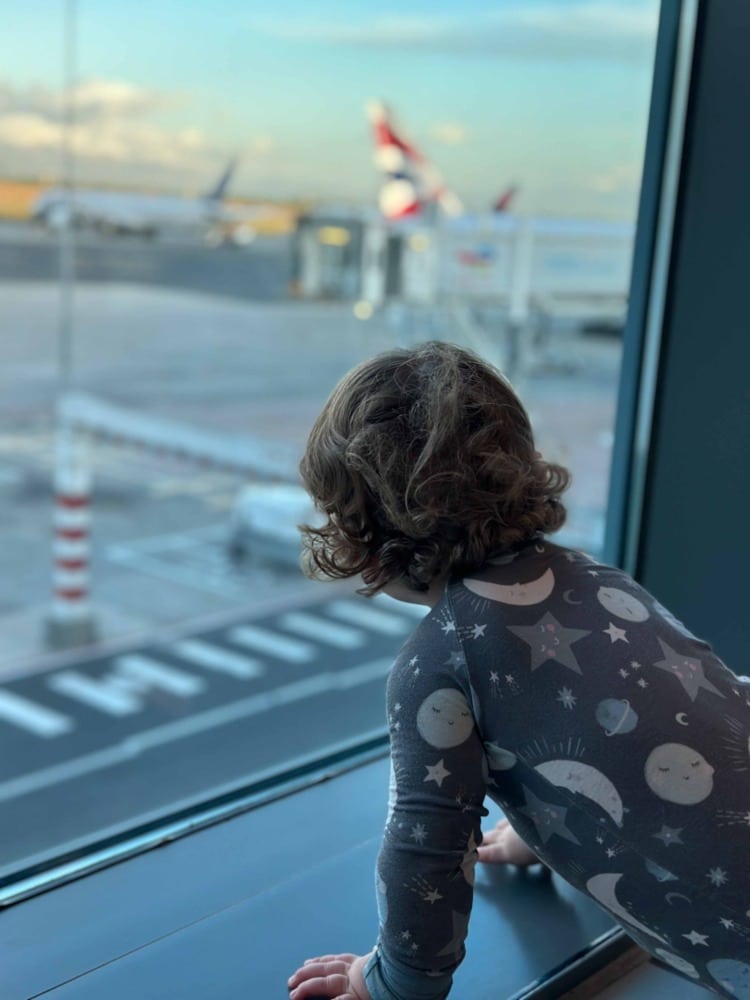
The safest way for baby to travel on a plane is buckled into their car seat. If you’re still deciding what’s right for your family on your upcoming trip, you can read about the pros and cons of an infant on lap vs infant in a seat of their own.
Even though your baby is allowed to ride on your lap until they turn two years of age, they still need their own flight verification document. It looks a lot like a ticket and will be printed at the check-in counter. You won’t be able to get through security without one. Some airlines, like United, will have you add the lap child when you book the flight. Others, like Singapore Airlines or Emirates, will require you to make a call and add them to your ticket over the phone.
Although your lap infant will be free on domestic flights, you will need to pay the taxes and usually about 10% of the fare for them to be on your lap for an international flight. So if you’re flying business class, even if you have booked your own ticket on points, you will probably have to fork over a few hundred dollars for the infant to ride on your lap.
Here’s an important point about that: if you’re booking a flight before your baby is born, every airline has a slightly different procedure. Often you can just put the child’s first name as “Baby” and an estimated birthday (if one is required), and then call to change your baby’s name and birthday later.
If you’re flying internationally I recommend reserving baby’s seat (or adding her as a lap infant) when you get your own ticket, otherwise the baby’s ticket price will be whatever the prevailing rate is. Adding a lap infant at check-in for an international flight means you will pay taxes plus 10% of the same-day fare – potentially thousands of dollars! For a baby riding in her own seat, the flight could also be sold out.
Be sure to sort all of this this out before arriving at the airport. Once at the airport, you will need to print out a physical ticket for the infant. Usually, I haven’t been able to check in online when I have our son added to my ticket. I have to present myself and my baby to the ticket agent, and during busy periods you’ll need to give yourself plenty of extra time.
Keep in mind, only one lap infant can be added per parent and each group of two or three seats can only have one lap infant because there’s only one “extra” oxygen mask for a child. If you have twins, each parent will need to sit in a separate group of seats. And if you’re flying a Canadian carrier with two young children, each adult can only be responsible for one infant – whether they’re on your lap or in their own seat!
3. Luggage and Carry on Requirements for Babies
My next biggest question was what can we bring for the baby, and do baby items count towards our checked baggage allowance? For most airlines, car seats and strollers do not count against checked luggage or carry-on allowances. If you do choose to check either of these items, put them in a high-quality travel bag that will keep the loose parts from getting caught. Though you’ll have to make peace with the possibility of damage or lost luggage, we thankfully haven’t had either happen yet after over 40 flights (knock on wood).
You can also opt to take both through security and onto the plane, provided they’re within regulations. Using your car seat on the airplane is the safest option for both the baby and the car seat. You can check the bottom of your car seat to see if it’s FAA-approved, but nearly every harnessed car seat in the US is. There are some great infant car seats for travel that can make your travels easy, or you can transition to a lightweight convertible car seat. Remember you can only use this car seat if you get your baby their own seat or the gate agent happens to be able to give you an extra seat on a flight that isn’t full.
For strollers, make life easy on yourself and take a smaller one that can fit through the scanners at TSA. We prefer to travel with strollers that can fit in the overhead bin so that we don’t even have to gate-check ours. It saves so much time and avoids breakage.
Diaper bags and pumps do not count towards carry-on limits.
4. Getting Through Airport Security with Your Baby

Leave extra time for TSA security now that you’re a parent! Nine times out of 10, we’ve been stopped for extra checks.
You’re allowed to travel with liquids over the usual 100ml/3oz limit with a baby ‘up to a reasonable amount’, which is up to the discretion of the TSA officer. If you get questioned on the amount of liquids you have, which has happened to me before, calmly but firmly explain you’re allowed to have them and ask to speak to a supervisor. This has worked for me.
You’re allowed to have purees, baby food, juice, water, and milk for the baby. Declare to the officer prior to passing through the x-ray machine that you have liquids for the baby. They may ask you to remove them. They will probably be put through extra machines for testing and they may perform a vapor test, but are not allowed to insert anything into the liquid. Extra checks usually take us an extra 15 or so minutes.
If you’re bringing a car seat or stroller through security, often it will be hand-inspected so that. it doesn’t get stuck in the scanner. Sometimes agents think your baby gear will fit but you can always request hand-inspection if you’re skeptical.
We love using a baby carrier in the airport to keep our hands free. If you go that route too, be sure to bring a carrier like this one that has no metal. In the US you’ll be able to leave your baby in the carrier and have your hands swabbed by TSA agents. If you use a ring sling or other carrier with metal in it, you’ll have to remove your baby (yes, even if they’re sleeping). In other countries the policies vary.
5. What’s in Our Airplane Diaper Bag
Pack way more diapers into your carry on than you think necessary, and about double the baby food you think you will need on the flight – trust me. It’s always important to plan for delays, especially since formula and diapers in the right size could be difficult to find in the airport. You’re allowed to bring baby food and liquids over the typical amounts, though prepare for extra checks (and time) at security.
You’ll also want a portable changing pad, small size diaper cream, and ample baby wipes.
We always bring some small toys, often saving one he’s never played with before for a long flight. This set is especially engaging! Bring a couple changes of clothes, because you never know, and if it’s going to be a long flight, we like to bring a sleep sack along to simulate bed time, since it’s what he sleeps in at home.
Oh and don’t forget a change of clothes for yourself – just in case.
6. Feeding on the Go
If your baby is bottle-fed, pack a few bottles and a portable bottle washing and drying station. I also bring a refillable travel sized container with our own unscented dish soap since soap in airport bathrooms can be variable or nonexistent.
For breastfeeding mothers, consider investing in a comfortable nursing cover (it doubles as a blanket too), and if traveling in the US, sign up for Mamava before you go. You’ll see these private nursing pods all over airports domestically. Some airports have nurseries as well, especially in Europe – search for the airports you’ll be visiting and “baby care lounge” or similar wording.
If your baby has started solids, carry a variety of age-appropriate snacks and/or purees for nourishment along the way. It’s not a guarantee you’ll find them in the terminal or on the flight. Some airlines offer “baby meals” but you’ll have to request it at least 24 hours in advance.
7. Plan Ahead for Travel Baby Gear
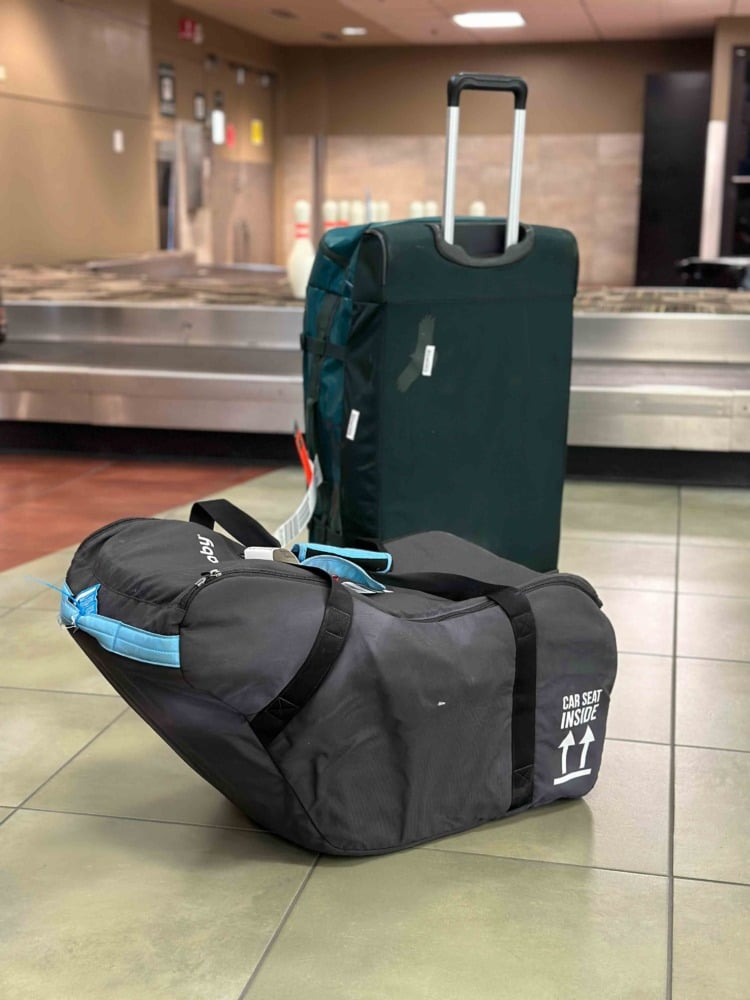
How are you going to get around? Will you need a car seat? Does wherever you are staying have a safe sleep space? You’ll definitely want to consider what baby travel gear you bring.
First, I research how people typically travel around the destination we want to visit. For our trip to Japan, I found that the train and metro system are excellent, so we would be able to leave the car seat at home and just rely on public transport. However I also found that few hotels had cribs, so that meant we needed to bring our own travel crib. I like to have the Slumberpod along as well to block out light when we’re all sharing a room.
For our trip to the Portuguese Azores, I found that most people rent a car. That meant we’d have to bring a travel car seat as the rental companies there didn’t have them available on their booking pages, but every hotel showed a crib available upon request, so we didn’t have to bring one of those along.
This research is fairly simple and straightforward with most booking sites showing these options and extras. It’s also possible to check a box that shows only properties with cribs on Airbnb. If this information isn’t displayed, feel free to reach out to the hotel or car rental company to see if they have these extras.
There are also baby rental companies the world over. Google your destination and ‘baby equipment rental’ to see what’s available where you’re going. In the US, Babyquip is a popular option.
8. Stroller or Carrier?
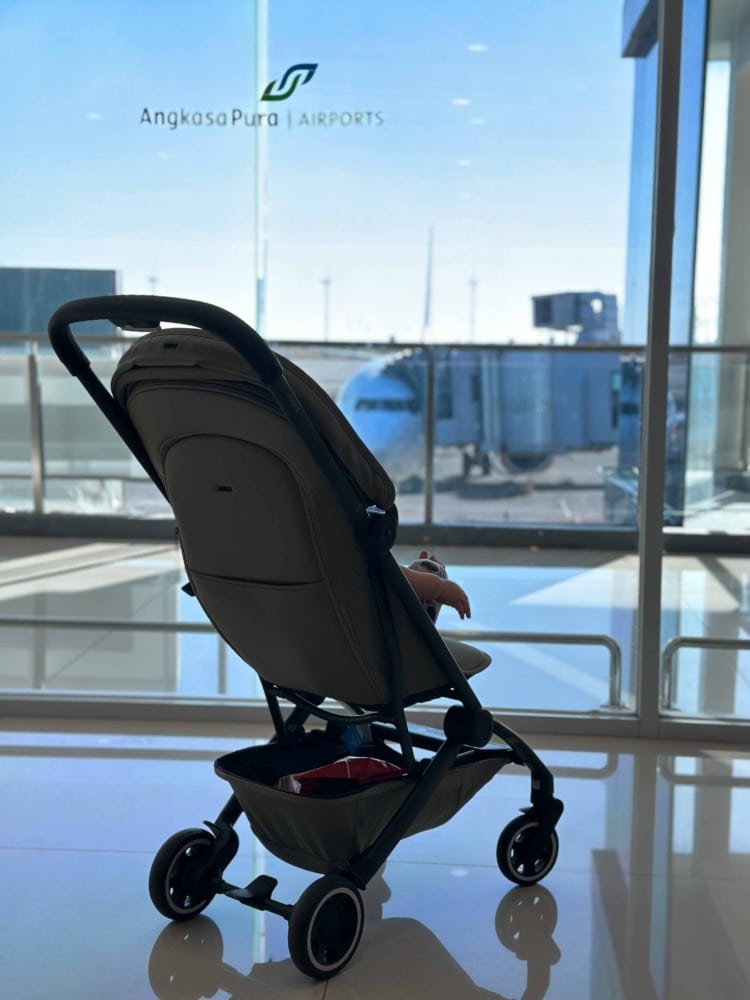
That is the question. The best answer will depend on the nature of your trip.
Does where you’re going even have sidewalks? Are they mostly cobblestone, like in Europe? Are you going to encounter stairs often? These may not be things you had to think much about before, but with a baby, it’s helpful to research this ahead of time.
Since we were taking all public transportation in Japan, and mostly traveled by foot on the sand on our trip to Mexico, we only brought a baby carrier for those two trips. Ultimately, I was glad not to have a stroller along, but it sure saved our backs having a stroller in Portugal! Strollers are also quite helpful at the airport, when you just need somewhere to put your little one. The older and bigger they get, the more essential a stroller will be.
9. Pack as Light as Possible
Packing light is even more important when traveling with a baby, yet it is so much more difficult to do. We look for accommodations that have a washer and dryer at some point on the trip, bring enough diapers that we trust for overnights, and look into where to buy food and formula before we go. Message boards and Google queries related to the destination are helpful for getting answers to these questions. We bring about half of what we’ll need, and buy the rest there.
I’ve actually found that diapers, formula, wipes, and baby food have all been cheaper abroad than in the US, including in Japan and Europe. Unless your baby has a very specialized diet or you’re going somewhere remote without access to baby items, I’d recommend buying some on the go.
10. Health and Safety
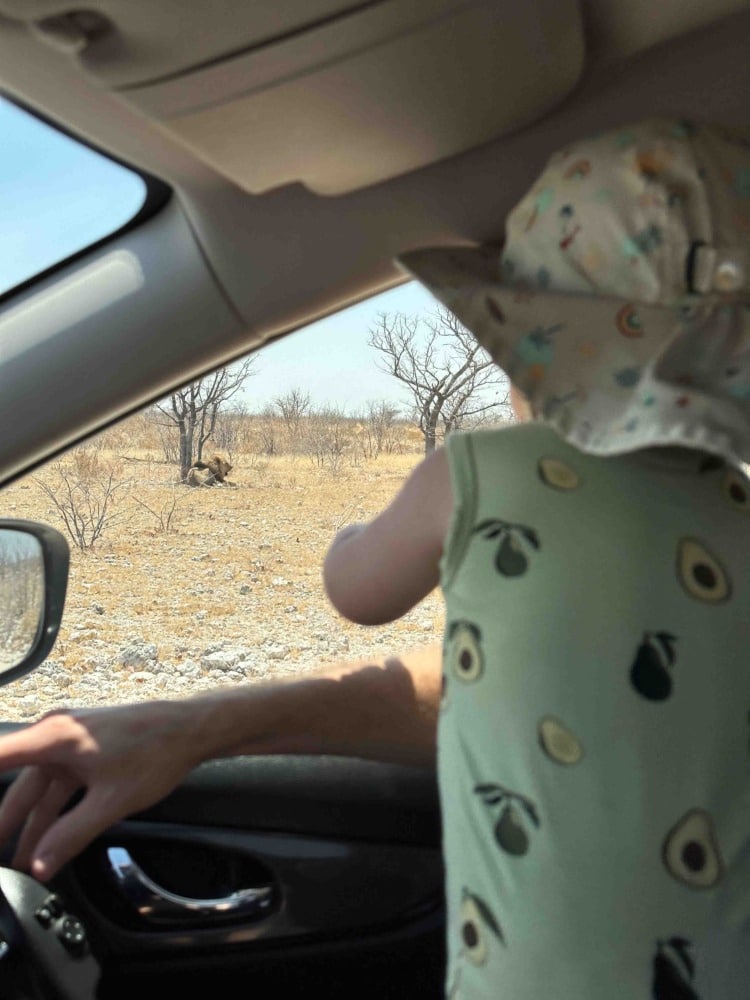
Always check with your baby’s pediatrician about your travel plans. They may recommend going to a travel clinic to get travel-specific immunizations depending on where you’re going.
Always come prepared with medications for your baby as well, rather than relying on getting them abroad.
Although I knew it was best practice to always travel with a first aid kit, I admit, I didn’t bother most of the time as a solo traveler. With a baby, it’s different. We always have his thermometer and medications along.
It’s also important to consider the water safety. In Mexico, we stayed at a house that had a water filter and UV system, and in Japan we used the tap water, which is safe to drink, but boiled it first. Almost every accommodation in Japan has a water kettle, which made this easy.
If your baby is mobile, you may want to bring some outlet covers and cabinet locks for extra safety. We always have a big blanket with us that we can spread out over a floor or outside to create a play area on the go.
11. How to Manage Sleep and Routine
One of my biggest fears when traveling with a baby was how he would handle jet lag. Babies are already not known for being the world’s best sleepers, so how in the world do you handle switching time zones?
We do what we can to maintain consistent nap and bedtimes on travel days. If nap time comes up when we would be on a flight, we do our routine and try to get him to sleep. Thankfully, the white noise helps.
When on the ground, we bring a small white noise machine, which can help drown out unfamiliar sounds and maintain a consistent sleep environment. When the evening comes, we do what we can to get him to sleep at a decent hour, following the same bedtime routine we have at home. If he wakes up in the middle of the night, we keep things dark and quiet. Gradual adjustments have been key for our jet lag, and it’s been easier each time than I expected.
Try to maintain your baby’s regular sleep and feeding schedules as much as possible to provide a sense of predictability amidst new surroundings. For naps, some babies can sleep in their stroller or in a baby carrier. If you’re road tripping, the car seat might be perfect. Some babies are less able to sleep on the go and will need a dark environment like their crib, which will probably change up how you approach your trip (maybe one spot on the beach for a week is better than a multi-stop itinerary, for example). You know your baby best.
Traveling with a baby is a voyage that challenges and rewards in equal measure, but it’s always been worth the added variables for us. What I have loved about traveling our son is how much it invites encounters with strangers that have been so heartwarming. People just LOVED our baby in Japan and Portugal. One lady even kissed his head!
Embrace these connections and watch as people play peek a boo with your baby, wave at them, or if you’re comfortable with it, even hold them. This has been my favorite part of traveling with our son. Babies have a unique ability to bridge divides, bringing smiles to faces from different cultures and backgrounds. In these moments of connection, the world becomes a little smaller, and I’m reminded that people are mostly good.
I love looking back on these memories, and can see how being in nature and exploring the world are already positively impacting him. It’s been great for me to keep up the adventures, too.
Life absolutely doesn’t ‘end’ because you have a family. Now that we’re used to traveling with my baby, it doesn’t even feel like extra work anymore. It’s just another kind of adventure.
About Kristin
Kristin Addis is the founder of parenthoodadventures.com, a resource for adventurous parents who still want to travel the world with their little ones. She’s been a travel expert for over a decade, leading adventure trips and spending several years as a nomad. Now, she’s showing her baby the world.
Before you go…
There are so many logistics to consider before your first big trip as a family! Have you thought about how to bathe baby while traveling? Be sure to read that article for lots of real-world tips.

